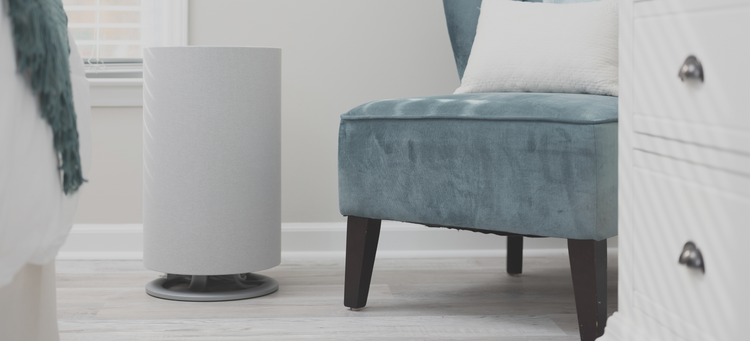Air Purifiers In Schools
Confusion and COVID has been a fact of our lives since 2020 and it continues to seep into almost every aspect of our lives including our children’s lives in school. COVID continues to be a concern as people try to ensure student safety in the face of new COVID variants like Delta and Omicron.
While there’s still a lot we don’t know about COVID, we do know for a fact that air purifiers help to mitigate the transmission of all airborne particles including viruses and other nasty bacteria from the flu to the common cold to allergens.
Basics Of How Air Purifiers Work

What To Avoid With Air Purifiers
It’s important to remember that not all air purifiers are built the same. The industry isn’t regulated by any official agency like the EPA, so doing your research is important to make sure you’re well equipped with the most effective and safest product on the market.
Air purifiers with ionizers or other alternate tech can actually be more harmful than helpful especially if they are Ozone generators or use an electrostatic precipitator. Instead, high efficiency air filters and a strong motor in an air purifier are important to use in schools and in the home.
Air purifiers at Oransi use high efficiency air filters and a strong motor so you don’t have to worry!
Primary Benefits Of Buying Air Purifiers
The effects of poor air quality in schools can lead to poor concentration, poor engagement, and can exacerbate health issues like asthma and allergies.
A 2021 study by researchers at the Harvard T.H. Chan School of Public Health assessed and measured cognitive function in relation to air quality to see if there was a connection between air quality and performance.
The study found that people are less productive with higher air pollution and less proper air filtration and ventilation meaning there’s a connection between air quality and cognitive function.
Higher quality air purifiers that help filter out airborne viruses, allergens, and help with asthma while also helping produce higher cognitive function resulting in higher productivity and focus.
Although this study was conducted in an office environment, the results can likely be applied to students or really anyone working in an indoor space as air quality is a proven factor that either helps or hinders performance.
Since air purifiers can help mitigate airborne viruses from spreading and help lessen symptoms like sneezing, watery eyes, and difficulty breathing stemming from asthma and allergies, they can potentially help to keep school absences for teachers, staff, and students down.
Student absences can affect federal funding and the best option for everyone is to keep everyone in the building as healthy as possible. Keeping student absences down is where the return on investment will be most evident.
Cost And Lifetime Ownership Costs Of Air Purifiers
Air purifiers are certainly not a waste of money given the endless benefits from helping to mitigate the transmission of airborne illnesses to helping everyone breathe easier, specifically those who are asthmatic or have allergies.

Research from Harvard and Syracuse shows a quantitative connection between productivity and air quality.
The study found that low air quality can hinder performance and people who were working in the clean air environment performed 61% better on cognitive tests than those in an environment without air filtration.
The research also found that going above and beyond by providing double the ventilation saw the cognitive test score accuracy increase by more than 100%.
Besides PTA organized fundraisers to find funding for air purifiers, there is also potential CARES Act funding available until the end of 2021.
Oransi has experience working with schools and this funding in particular, email cs@oransi.com for any guidance you might need on getting air purifiers in your classrooms.







